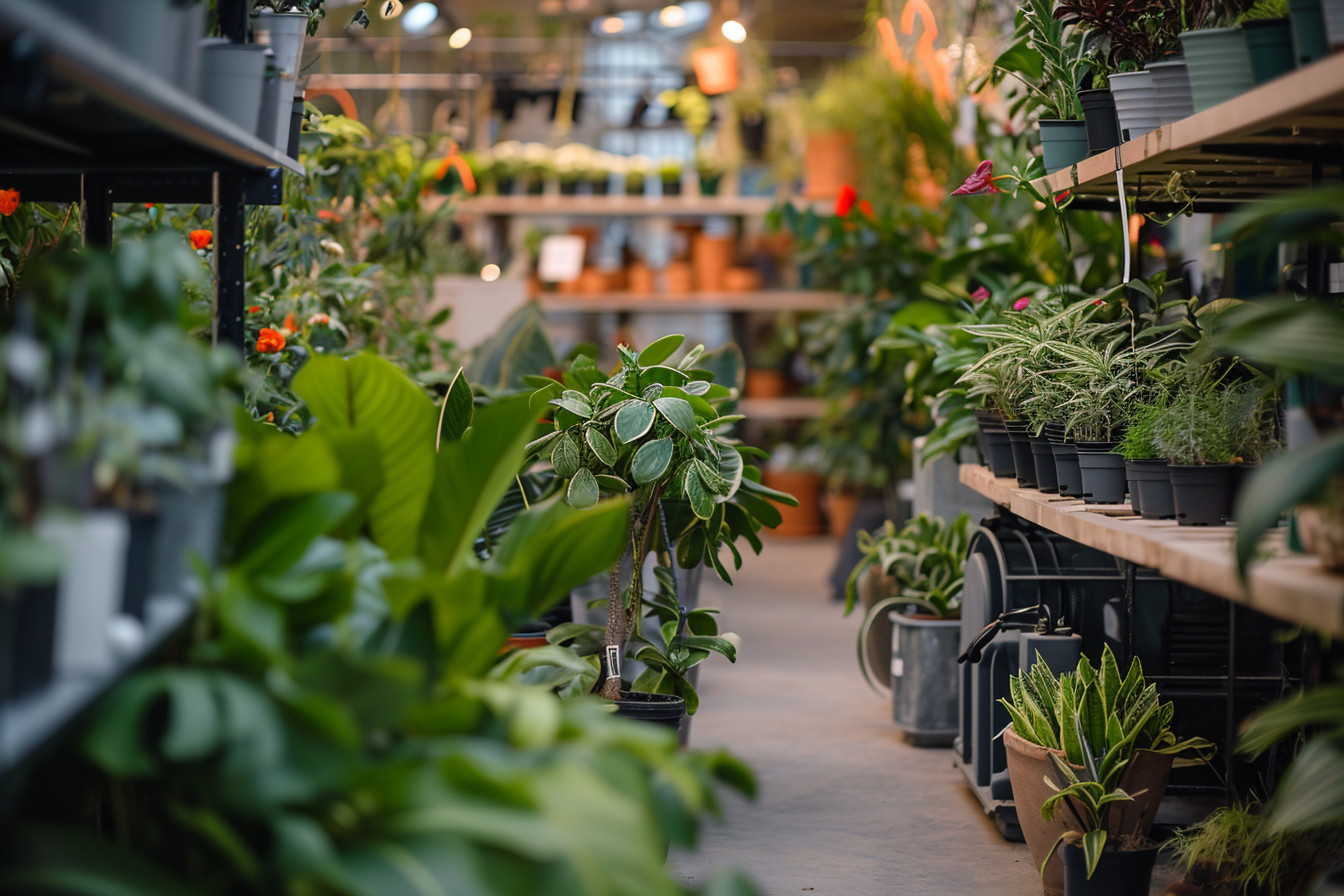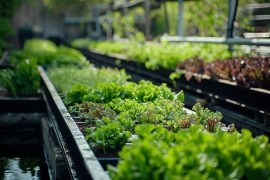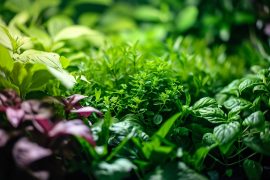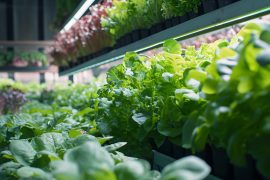Starting an indoor garden feels a bit like becoming a plant parent, doesn’t it? I’m here to walk you through picking out the perfect gear that won’t leave you or your leafy friends hanging. It’s all about creating that serene slice of nature right in your living room.
Importance of Choosing the Right Equipment
When I started my own indoor garden, I quickly realized that choosing the right equipment wasn’t just a luxury, it was essential. Without the proper tools, plants can struggle or fail to thrive, and that peaceful, natural oasis I was gunning for? Well, it simply wouldn’t come to pass.
Making or Breaking Your Garden Experience
Let’s talk tech for a sec—indoor gardening’s got its own set of toys. From grow lights to humidity controllers, each piece plays a pivotal role. Grow lights, for example, are like the sun substitute for your indoor garden. They’re crucial for photosynthesis, and without them, your plants might as well be trying to grow in the dark. Selecting the right spectrum and intensity can mean the difference between lush growth and spindly, sad little sprouts.
Balancing the Elements Simplicity
I’m not one for overly complicated setups, and I bet you’re not, either. So, when I mention things like soil pH testers or irrigation systems, know that they’re here to simplify your life. A good soil pH tester takes the guesswork out of knowing whether your soil is ideal for your plants. And an irrigation system? It’s like having a personal plant-sitter that ensures your greens are quenched just right, every time.
| Equipment Type | Purpose |
|---|---|
| Grow Lights | Substitute for sunlight |
| Soil pH Testers | Check soil for ideal plant conditions |
| Irrigation Systems | Automate watering of plants |
Long-Term Growth Prospects
Investing in high-quality equipment may feel a bit heavy on the wallet at first, but it pays off in the growth and vitality of your indoor garden. Plus, the right tools are often more durable and cost-effective over time. I’ve found that cheap knock-offs just lead to headaches and wilted plants down the line. Trust me on this; durability and reliability should be on your checklist.
Understanding Your Indoor Garden Needs
Before I dive into specifics, let’s pause for a moment. Imagine the tranquility of your indoor oasis, the lush greenery softly nudging away the noise of the outside world. That’s what we’re cultivating here, not just plants, but a serene haven.
Your garden’s success starts with understanding its unique needs. Think about the garden like a buddy you’re getting to know—what does it enjoy? Does it bask in the glory of the sun, or does it thrive in the soft shadows? The answers to these questions guide what equipment you’ll need.
Let’s get a bit educational here. Every plant is a world of its own, hailing from diverse climates and habitats. It’s crucial to recreate these conditions as much as possible. For example, succulents yearn for the desert sun, while ferns covet the dappled light of the forest floor. This is where a grow light can become your go-to tool, offering a spectrum of light that mimics the sun’s nurturing rays.
Soil pH can become a real game-changer. If you’ve ever watched a thriving plant suddenly droop and fade, pH could’ve been the culprit. I had a hydrangea that once threw a real fit over this. By using a Soil pH Tester, I adjusted the acidity, and voila—my hydrangea became the envy of my indoor jungle.
Don’t overlook the importance of proper hydration. Overwatering or underwatering can spell disaster faster than you can say “oops.” Irrigation systems range from simple drip devices to sophisticated watering networks. They ensure that each plant gets just the amount of water it needs, and honestly, it’s a load off my mind.
To bring these points home, let me share a little story. My friend Alex, another gardening enthusiast, once struggled with her home garden. Despite her best efforts, her plants were just surviving, not thriving. Then, she invested in a quality irrigation system and some top-notch grow lights. It’s amazing how quickly things turned around. Her indoor garden is now flourishing, and she’s the one giving out tips.
In essence, knowing your garden’s needs is the bridge between struggle and success. We need to be attentive to our plants, providing not just the basics but also the extra care that takes our gardens from mundane to magnificent.
The Essentials: Lighting and Temperature Control
Walking into my indoor garden feels like stepping into a peaceful sanctuary, a space where I connect with nature on a primal level amidst the hustle of daily life. It wasn’t always like this though. I’ve learned that achieving that kind of harmony requires not only love and patience but also the right equipment. Let’s delve into the nitty-gritty of lighting and temperature control which are paramount for a thriving indoor garden.
Getting the Light Just Right
I’ve discovered through trial and error that without sunlight, there’s no indoor garden to speak of. Grow lights are a blessing. They’re designed to replicate the full spectrum of the sun, providing those nourishing rays that plants crave. But here’s the kicker: not all plants are sunbathers; some prefer shade. Knowing the difference is the key. I remember my first LED grow light. I mistakenly blasted all my plants with intense light, and let’s just say, it wasn’t pretty. I’ve since learned to adjust the light intensity and duration depending on the plant species.
If you’re a bit of a tech geek, you’d love the programmable timers and smart systems that control these lights with precision. It’s like having your own little weather station indoors. Pretty cool, right?
Temperature Matters a Lot
Onto the invisible yet powerful component: temperature. One thing I’ve noted over time is how closely plants’ growth is linked to the right temperature. Most of our indoor favorites thrive at temperatures similar to a comfortable home – about 65-75°F (18-24°C). But here’s what’s fascinating. Plants like orchids have a different vibe. They prefer it a bit cooler, which is why I handle them with extra care.
To maintain that ideal temperature, I rely on a thermostat connected to my garden’s heating and ventilation system. In my early gardening days, I would constantly check the thermometer, but life got a lot simpler once I realized these gadgets could do the worrying for me.
Let me tell you about an episode that illustrates the importance of temperature control. My friend Sarah had a beautiful collection of tropical plants, and she noticed they were under the weather. Turns out, the room was too chilly, and a simple tweak in the ambient temperature is what it took to bring them back to life.
Getting the Perfect Containers
When I talk about indoor gardening, containers are far more than just pots to stick your plants in—they’re the homes where your green buddies grow and thrive. It’s where the magic starts, really. So choosing the right ones is key for a harmonious garden space, something that offers peace to your space and your mind.
Through the years, I’ve learned that containers affect not just plant growth but also the aura of the space. Imagine a sleek, modern room with a series of minimalist geometric planters—suddenly, these containers are more than functionality; they’re part of the room’s soul.
The basics though, you gotta know them. There are materials like plastic, terracotta, and ceramic, each with its pros and cons. Plastic is lightweight, versatile, and retains moisture well, making it a go-to for many gardeners. And then there’s terracotta – porous and breathable, ideal for plants that hate soggy feet, a way of saying they don’t like too much water. Ceramic pots, often glazed and beautiful, strike a balance between style and function, usually featuring a drainage hole for excess water to escape.
While I’m on the subject of drainage, let me tell you, it’s non-negotiable. No matter the container, ensure there’s a way for water to get out. Waterlogging is a surefire way to root rot, a silent killer in the gardening world. But guess what? If you fall in love with a pot that lacks drainage, there’s a fix. I often grab a drill and carefully create my own drainage holes. It’s a simple step that can save you a world of trouble.
Size does matter in the world of containers. You don’t want your plants’ roots to be all cramped and struggling. Did you know that a pot too small can stunt a plant’s growth or even kill it? On the flip side, a pot too large can lead to overwatering issues. A good rule of thumb is to choose a container that’s about 20% to 30% larger than the root ball of your plant.
Selecting the Right Soil and Fertilizers
Ever stopped to think about how soil isn’t just dirt, but a living, breathing foundation for your plants? It’s pretty amazing to consider that the right blend of soil can bring your indoor garden closer to the serene look and feel of nature’s untouched landscapes. Sitting back and watching the slow, harmonious growth of my indoor plants has become one of my daily joys, and it all starts with choosing the right soil.
Think of soil like a cozy blanket for roots, providing support, nutrients, and air circulation. There’s a whole universe within, teeming with microorganisms that are pivotal for plant health. For indoor gardening, I’ve learned that pre-packaged potting mixes are way to go. They’re specifically designed to be lightweight and to prevent compaction, allowing roots to spread out comfortably and breathe.
As for fertilizers, they’re like sending your plants to a spa – a rejuvenating boost that encourages lusher growth and bountiful blooms. But like any spa treatment, it’s about finding the right balance. Too much can overwhelm and damage your plants, while too little may leave them lackluster. Organic options, such as worm castings or fish emulsion, not only feed your plants gently but also enrich the soil for the long haul.
Essential Nutrients your plants crave include:
- Nitrogen (N)
- Phosphorus (P)
- Potassium (K)
These are the N-P-K values you’ll often see on fertilizer packages. Here’s a sneak peek into what each does:
- Nitrogen helps with leaf and stem growth.
- Phosphorus aids in root development and flowering.
- Potassium contributes to overall plant health.
Depending on what you’re growing, nutrient needs can vary. Leafy greens, for example, might want more nitrogen, whereas flowering plants might appreciate a bit more phosphorus in the mix.
Fertilizing isn’t a one-size-fits-all deal. The type of plants you’re cultivating, the life stage they’re in, and even the growing season play pivotal roles. I’ve cultivated a habit of keeping a gardening journal. It helps me track what works best for each plant species, tweaking my approach as I go along.
Maintaining Proper Humidity Levels
When I first began my journey into indoor gardening, I had no idea that air could be both a friend and a foe to my plants. It turns out that maintaining proper humidity levels is a delicate balancing act. Too dry, and I’ve watched my tropical plants suffer. Too moist, and my succulents protest by getting all sorts of finicky. It’s about keeping harmony in a world that’s confined to just a few square feet.
I’ve learned that humidity is crucial for plants since it aids in their breathing process. Yes, plants breathe, though not quite like we do. Their leaves take in carbon dioxide and give off oxygen, but when the air is too dry, these leafy friends can get dehydrated. I try to keep that calm, dewy environment they crave, much like a serene morning in a lush forest.
Let’s get down to brass tacks. Here are some simple yet effective ways I ensure my indoor garden has just the right amount of humidity:
- Grouping plants together creates a microclimate with higher humidity levels which is pretty neat.
- Humidity trays filled with water and pebbles not only look zen but also promote a moist environment as the water evaporates.
- A spray bottle can be my best friend on drier days for a quick mist, a little like making it rain on demand.
- When all else fails, a quality humidifier does not just help me breathe easier; it’s like a tropical vacation for my plants.
Education time: the ideal humidity level for most houseplants is between 40% to 60%. Here’s a clear-cut table of how I keep track of these stats in my green oasis:
| Plant Type | Ideal Humidity Level |
|---|---|
| Tropical | 50-60% |
| Succulents and Cacti | 40-50% |
| Ferns | 60%+ |
| Orchids | 40-70% |
Watering Techniques for Indoor Gardens
When I think about watering my indoor garden, it’s like a little ritual: just me, the plants, and the soothing sound of water. It’s not just about giving them a drink; it’s about ensuring each plant gets just what it needs to thrive. This is where knowing the right techniques comes into play.
Since we’ve already tackled the importance of humidity, let’s dive into watering methods that keep our green friends happy.
Bottom Watering is one technique I’ve found particularly peaceful. It’s like giving your plants a spa day where they soak up water from the bottom up. You simply fill a tray with water and set your potted plant in it, letting the soil absorb the moisture through the drainage holes. It’s great for ensuring that the water reaches the roots without overwhelming the plant, and it can help prevent common problems like mold on the soil surface.
Then there’s the classic Top Watering method. It’s more straightforward, where you pour water over the top of the soil and let it seep down. I like to use a watering can with a long spout to control the flow, making sure that it’s a gentle stream rather than a flood. You want to moisten the soil well, but not to the point where water is sitting on the surface for too long.
You might be wondering, “What about those nifty self-watering systems I’ve heard about?” These systems are a godsend for those with a busy schedule or a forgetful mind. They steadily release water over time, which means less frequent watering chores for you. Plus, they can encourage deeper root growth by drawing roots down to the water source.
Here’s where a bit of technical know-how comes in handy. It’s all about the capillary action, where water moves through the soil, drawn up by the dryness above. With these systems, your plants get a consistent amount of moisture, and you get a bit more freedom.
For those with a knack for DIY or a passion for turning recycling into resourcefulness, DIY wick watering systems are quite the crafty project. You just need a container, some cotton rope, and a little bit of creativity. The wick pulls water gradually from the reservoir to the soil, keeping the moisture steady.
Choosing the Ideal Plant Varieties
When I transformed my living space into a green haven, picking out the right plants felt almost meditative. It’s not just about finding the ones that catch your eye; it’s about ensuring they’ll jive with the indoor conditions and your lifestyle. It’s kind of a harmony thing, like matching a roommate who enjoys the same vibe as you do.
Light is a big deal for plants. We’ve all seen that sad, leggy plant stretching towards a sliver of sunlight – that’s a plant crying out for more rays. So, I’ll get going with light. If your space is flooded with sunshine, you’re in luck: go for sun lovers like succulents or jasmine. But if it’s more like a cave, don’t worry. There are plenty of cool shade dwellers, like the peace lily or ZZ plant, who’d love to share your low-lit retreat.
Let’s talk space. Those Instagram-worthy monsteras look great but grow huge. Got room for that? If not, consider smaller gems like the Chinese money plant. Before I bring a new plant home, I like to visualize where it’ll go. It keeps me from ending up with a jungle that looked way different in my head.
Watering needs are next on the list. After diving into watering techniques earlier, you’ll want to link up plants with your chosen watering method. I’m a fan of self-watering systems, because let’s face it, life gets hectic. But for the more hands-on gardener, you might pair top watering with a thirsty ferns, or bottom watering with root-rot-prone orchids.
I can’t stress enough how different plants have different appetites. Overfeeding can burn their roots, while underfeeding leaves them starved. Get to know what and how much your plants crave. It’s part of the bonding experience. Take nitrogen – leafy plants can’t get enough, but too much for your cacti? Disaster.
As for the vibe, it’s all about what each plant brings to the space. That’s the art of gardening, really. Cacti and succulents bring a desert warmth, while ferns can make a room feel like a cool forest.
Final Thought
So there you have it. Picking the right tools and plants for your indoor garden isn’t just about aesthetics; it’s about creating a thriving ecosystem that meshes with your lifestyle and space. Whether you’re a hands-off gardener who loves a good self-watering system or someone who enjoys the daily ritual of misting and feeding, there’s a setup that’s perfect for you. Just remember to keep your plants’ needs in mind and don’t be afraid to get a little dirt under your nails along the way. Happy gardening!








